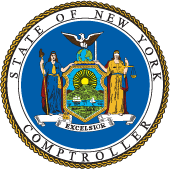The Community Development Block Grant (CDBG) Program (Assistance Listing Numbers 14.218 and 14.269) provides annual grants on a formula basis to states and localities to assist low- and moderate-income communities. Funds may be used for a variety of purposes, including community development efforts and community services, but the City uses the majority of funds for housing support.
The program is authorized under Title I of the Housing and Community Development Act of 1974 and administered by the United States Department of Housing and Urban Development. Eligibility is determined using census data and metropolitan area delineations. Factors considered, using a dual statutory method (comparison of two formulas with the higher amount being awarded), include population, poverty levels, housing overcrowding, age of housing and population growth lag within a metropolitan area. CDBG Disaster Recovery (CDBG-DR) Funds are also available for recovery from presidentially declared disasters and can be used as a match for Federal Emergency Management Agency (FEMA) grants.
Funds to New York City
The City’s FY 2026 preliminary budget includes CDBG and CDBG-DR revenue totaling $423 million in FY 2025 and $295 million in FY 2026. The drop is largely due to a decline in CDBG-DR funds, which comprise $156 million in FY 2025, but just $57 million in FY 2026.
The City allocated nearly three-quarters of the CDBG and CDBG-DR funds ($309 million), to the Department of Housing Preservation and Development (HPD) in FY 2025, dropping to two-thirds ($195 million) in FY 2026. HPD uses the largest share of the funds for its development function, which includes initiatives involved in the production and/or rehabilitation of residential projects and a portion of the City’s subsidy to the New York City Housing Authority (NYCHA). Almost all of the City’s CDBG-DR funds ($123 million in FY 2025 and $42 million in FY 2026) are passed through HPD to NYCHA. HPD uses the balance of CDBG funds for a variety of functions, including administration and emergency repair (see Figure 1).
Impact
- The City’s planned subsidy to NYCHA totals $618 million in FY 2025 and $375 million in FY 2026, of which CDBG and CDBG-DR funds comprise 26.5 percent and 14.5 percent, respectively. NYCHA uses the funds primarily for staff that oversee rehabilitation projects, Local Law 11 façade improvements and to repair damage caused by Hurricane Ida and Hurricane Sandy.
- In both FY 2025 and FY 2026, CDBG funds about 95 percent of HPD’s planned costs for emergency repair programs to correct hazardous housing conditions. The demand for these services has increased (see Figure 2). Funds also support 86 percent of HPD’s total costs for lead paint remediation, growing to nearly 95 percent in FY 2026; and 70 percent of HPD’s planned costs for code enforcement in both years. Code Enforcement includes the enforcement of the City’s Housing Maintenance Code, which covers heat, hot water, mold, pests and other building safety issues
FIGURE 1 – HPD Uses of CDBG and CDBG-DR Funds
FY 2026 Preliminary Budget (in millions)
| Budget Function Category | FY 2025 | FY 2026 |
|---|---|---|
| Development | $129.6 | $43.6 |
| Administration, Program | 44.7 | 15.1 |
| Preserv. – Emergency Repair | 34.4 | 34.7 |
| Preserv. – Code Enforcement | 31.9 | 31.4 |
| Housing Ops – Emergency | 25.4 | 25.5 |
| Preserv. – Lead Paint | 20.7 | 21.2 |
| All Other | 22.3 | 23.5 |
| Total | $309.0 | $195.0 |
Note: Columns may not add due to rounding.
Sources: NYC Office of Management and Budget, Budget Function Analysis; OSC analysis
FIGURE 2 – Unique Emergency Housing Maintenance Problems Requiring HPD Response
Sources: NYC Mayor's Management Report; OSC analysis
